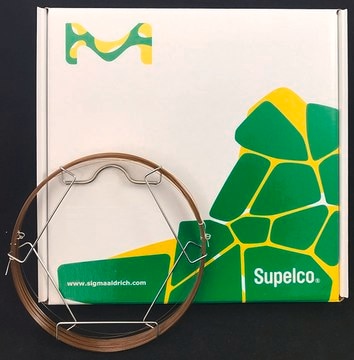24018
SP®-2330 Capillary GC Column
L × I.D. 15 m × 0.25 mm, df 0.20 μm
About This Item
Recommended Products
material
fused silica
Quality Level
agency
meets requirements for USP G8
parameter
≤25-250 °C temperature (isothermal or programmed)
Beta value
313
df
0.20 μm
technique(s)
gas chromatography (GC): suitable
L × I.D.
15 m × 0.25 mm
matrix active group
Non-bonded; poly (80% biscyanopropyl/20% cyanopropylphenyl siloxane) phase
column type
capillary highly polar
Looking for similar products? Visit Product Comparison Guide
Related Categories
General description
USP Code: This column meets USP G8 requirements.
Phase:
- Non-bonded
- Poly(80% biscyanopropyl/20% cyanopropylphenyl siloxane)
- Subambient to 250 °C (isothermal or programmed)
Application
Other Notes
Legal Information
Certificates of Analysis (COA)
Search for Certificates of Analysis (COA) by entering the products Lot/Batch Number. Lot and Batch Numbers can be found on a product’s label following the words ‘Lot’ or ‘Batch’.
Already Own This Product?
Find documentation for the products that you have recently purchased in the Document Library.
Our team of scientists has experience in all areas of research including Life Science, Material Science, Chemical Synthesis, Chromatography, Analytical and many others.
Contact Technical Service

